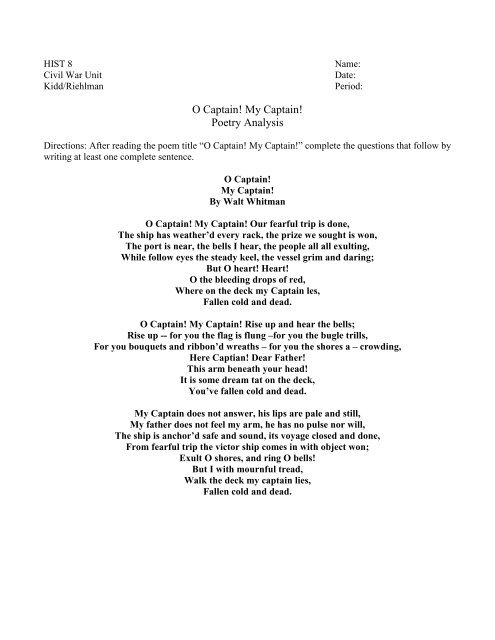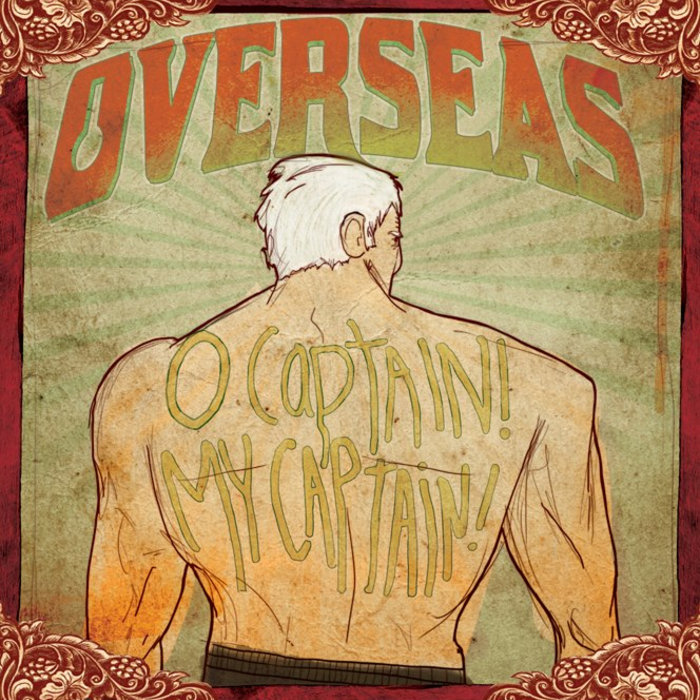

Length of Lesson Plan: Approximately 32 pages. Target Grade: 7th-12th (Middle School and High School) Of the text, while the tests and quizzes will help you evaluate how well the students have grasped the material. The lessons and activities will help students gain an intimate understanding Quizzes/Homework Assignments, Tests, and more. You'll find 30 Daily Lessons, 20 Fun Activities, 180 Multiple Choice Questions, 60 Short Essay Questions, 20 Essay Questions, All of a sudden, drops of blood are on the deck of the ship, and the speaker notices that his captain is dead.The O Captain, My Captain lesson plan contains a variety of teaching materials that cater to all learning styles.It turns out that there is a lot of it here. When you think heart, though, you do think blood.It’s a cliché to speak from the heart, but, really, hearts have no mouths, so they don’t speak very well. This is a call to an abstract thing that can’t possibly answer back. If you read it the second way, though, and think the speaker is calling out to his own heart, then you’ve got an apostrophe on your hands, friend-o.If you read it the first way, with the heart representing the captain’s will, then you’re dealing with a symbol, as some part of the captain is used to represent an abstract quality (his will or courage). We think you can read this either way.He belts out the word “heart,” and this could mean that he is shouting out a) to his captain to keep heart, as in not to give up, or b) to his own heart, as if in pain.The sailor calls out again, but this time it isn’t for the captain.

The speaker is foreshadowing, subtly telling the reader in advance that something is going to happen and it isn’t going to be pretty.īut O heart! heart! heart! O the bleeding drops of red, Where on the deck my Captain lies, Fallen cold and dead.In contrast to the happy people on land, the boat is described like a ghost ship: “grim and daring.”.When a part of something is used to stand for a whole (for example, “all hands on deck” means all the people should be on deck, not just their hands), this is called a synecdoche. Although keel usually refers to a ridge that goes along the underside of the boat, the word can also refer to the boat as a whole, as it does in line 4.The people on the shore watch the boat come in.But the boat is in sight of the land, and there are people on the shore cheering and ringing church bells as they approach (hip-hip-hooray!).So the speaker is a sailor on the ship, and the ship isn’t just yet safe in the harbor (which would be a good place to safely “park” a boat).The port is near, the bells I hear, the people all exulting, While follow eyes the steady keel, the vessel grim and daring: They’re probably tired after such a grueling voyage, but apparently they’ve succeeded in their mission, or what the speaker calls their “prize.” Whatever this mission or prize was, we know that it wasn’t easy to get.They were on a ship that survived, or “weathered,” strong winds (a.k.a.The speaker is shouting out to his captain (“O Captain!”) that they’ve finally made it home after a frightening trip.

O CAPTAIN! my Captain! our fearful trip is done The ship has weather’d every rack, the prize we sought is won


 0 kommentar(er)
0 kommentar(er)
